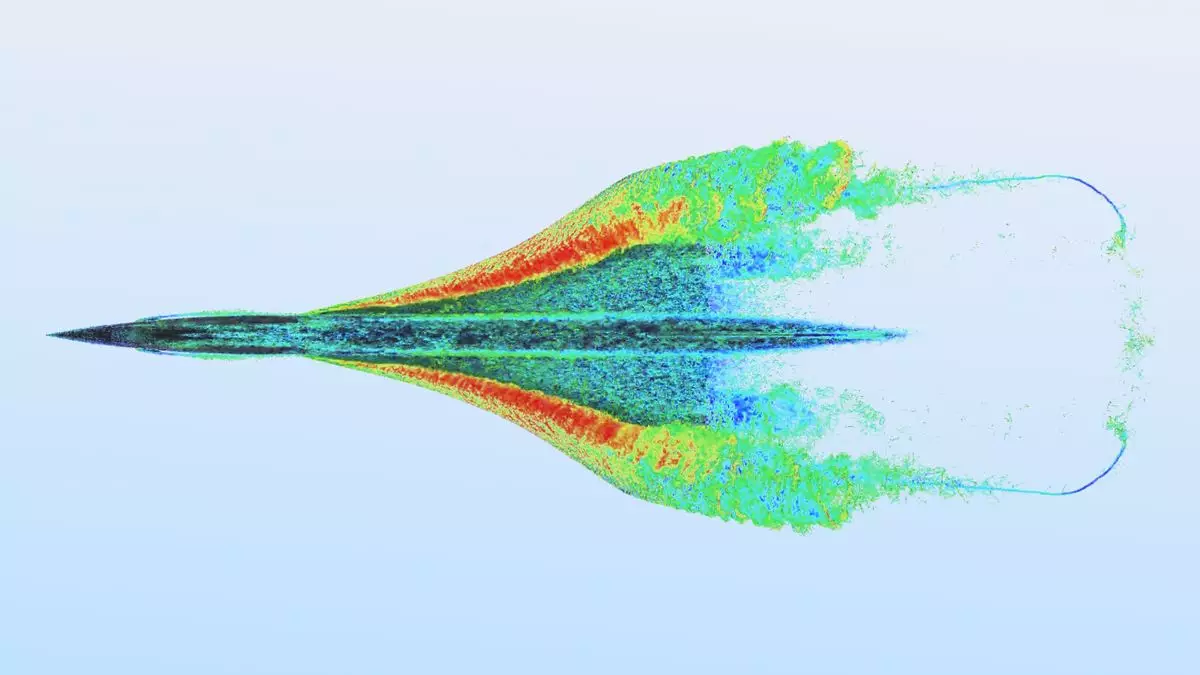Dr. Moritz Lehmann recently embarked on an exhilarating endeavor by subjecting one of the most demanding Computational Fluid Dynamics (CFD) simulations to the world’s largest single-node GPU server. Focusing on the iconic Concorde aircraft, the results of this simulation are nothing short of breathtaking.
Unleashing the Power of the GigaIO SuperNODE Server
The GigaIO SuperNODE server, available in several configurations, played a pivotal role in this extraordinary feat. While one version comprises 24 Nvidia’s A100 graphics cards, the specific design utilized by ProjectPhysX boasted an impressive 32 AMD Instinct MI210 64GB GPUs. The computing capabilities of these GPUs are truly awe-inspiring.
Unprecedented Efficiency and Complexity
The simulation, which featured a staggering 40 billion cells overall, was completed in an incredibly efficient manner. Dr. Lehmann successfully ran the simulation in just 33 hours, with 29 hours dedicated to 67k timesteps and 4 hours for rendering 5×600 4K frames. The resulting resolution of 2976×8936×1489 (12.4mm)³ cells surpassed expectations, trumping even the complexity of popular flight simulators.
The rapid completion time is a remarkable achievement, considering that commercial CFD software often takes years to perform similar simulations. This achievement represents a significant advancement in the efficiency of CFD simulations.
Utilizing OpenCL (Open Computing Language), ProjectPhysX seamlessly harnessed the power of the GigaIO SuperNODE server. The groundbreaking FluidX3D simulation functioned flawlessly with 32-GPU scaling, eliminating the need for any code changes. This streamlined process highlights the enormous potential of OpenCL in simplifying CFD simulations.
The primary objective of this test was to evaluate the effectiveness of the newly implemented free-slip boundaries in the simulation. These boundaries aim to improve the accuracy of the model compared to previous “no-slip boundaries” implementations.
In contrast to no-slip boundaries, which enforce fluid velocity at the wall to be the same as the wall velocity, free-slip boundaries offer more flexibility. With free-slip boundaries, the fluid velocity perpendicular to the wall is not constrained, allowing the fluid to glide freely along the wall without friction. This innovation opens up exciting possibilities for further improving CFD simulations.
The successful completion of this ambitious simulation using the GigaIO SuperNODE presents a multitude of promising opportunities for the field of aviation. By accurately simulating complex fluid dynamics, researchers can gain valuable insights without resorting to risky real-world experiments. This advancement brings us closer to a safer and more efficient aviation industry.
Dr. Lehmann’s groundbreaking work showcases the immense potential of high-performance GPUs and demonstrates their ability to revolutionize the field of Computational Fluid Dynamics. With relentless innovation and the continued integration of cutting-edge technologies, the future of CFD holds tremendous promise. By pushing the boundaries of simulation capabilities, we can unlock new frontiers in various industries, benefiting humanity as a whole.


Leave a Reply